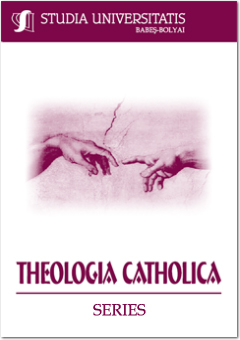ASPECTE TEORETICE ALE IDENTITĂŢII NAŢIONALE ŞI CONFESIONALE. BISERICA ORTODOXĂ ŞI BISERICA UNITĂ ÎN TRANSILVANIA JUMĂTĂŢII DE SECOL XIX
THEORETICAL ISSUES OF NATIONAL AND CONFESSIONAL IDENTITY. THE ORTDODOX CHURCH AND THE GREEK-CATHOLIC CHURCH IN TRANSYLVANIA AT THE MIDDLE OF THE 19TH
Author(s): Oana HaborSubject(s): Christian Theology and Religion
Published by: Studia Universitatis Babes-Bolyai
Keywords: national identity; confessional identity; Church; State; Romanian Orthodox Church; Romanian Greek-Catholic Church.
Summary/Abstract: Theoretical Issues of National and Confessional Identity. the Ortdodox Church and the Greek-Catholic Church in Transylvania at the Middle of the 19th Century. During the nineteenth century, the question „Who am I?” Or „Who do I belong to?” has become increasingly problematic in the Transylvanian area, especially since within a single nation, two faiths, the Orthodox and Uniate disputed their different views on the condition of „being Romanian”. But which are the elements that shape an „identity”? Two types of identity discourse, national and religious. What is the connection between them, get the two to identify each other? We talk about the middle of the-nineteenth century, when important mutations produced, giving here, for example, only changes in state politics or the institutional history of the Orthodox Church and Uniate Church, that had repercussions over the development of the binominal religion-nation. In a time when church often brandished some political powers and was considered a support for the national principle, when the religious disputes have increased between the Uniate Church and the Orthodoxone, which is the relationship that may be established between church, confession, and the state, nation? How did the identity discourse of the two churches identified with the national principle? The correlation between the national and religious framework is essential, especially in Transylvania, an area in which the absence of political institutions recognized by the foreign authority, the two Romanian churches have offered shelter for long collective sensitivity. In the absence of some unitary studies that focus on the midnineteenth century, the research theme aims to outline the relationship in terms of religion-nation as two points that come to overlap, to identify each other.
Journal: Studia Universitatis Babes Bolyai - Theologia Catholica
- Issue Year: 55/2010
- Issue No: 4
- Page Range: 35-42
- Page Count: 8
- Language: Romanian

